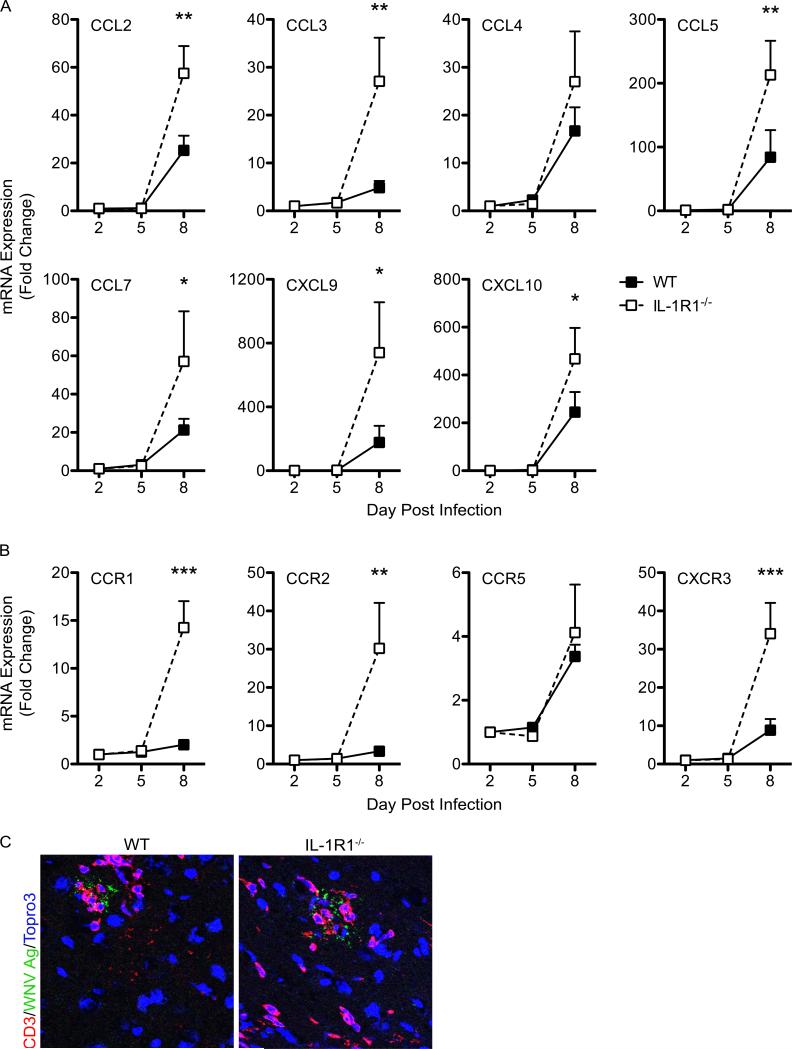Figure 3. Inflammatory chemokine signaling is increased in the absence of IL-1 signaling within the CNS during WNV infection.
Examination of inflammatory chemokine expression in the CNS. Brain tissue was harvested following cardiac perfusion from WNV-infected WT (closed squares) and IL-1R1−/− mice (open squares) at indicated time points and chemokine (A) and chemokine receptor (B) mRNA levels were analyzed via qRT-PCR, normalized to GAPDH and are presented as the mean fold change in mRNA levels over uninfected controls. Statistical significance of increased chemokine expression in WNV-infected IL-1R1−/− mice was determined in comparison with infected WT mice. (C) Representative confocal microscopic images from brain sections (brainstem region) from wild-type (left) and IL-1R1−/− (right) WNV-infected mice stained for WNV antigen (green), CD3 (red) and nuclei (blue). Images are representative of results from five independent mice. Data are averages of results for at least 4 mice per group and reflect at least two independent experiments and presented as mean values ± S.E.M. *p<0.05, **p<0.01, ***p<0.001

